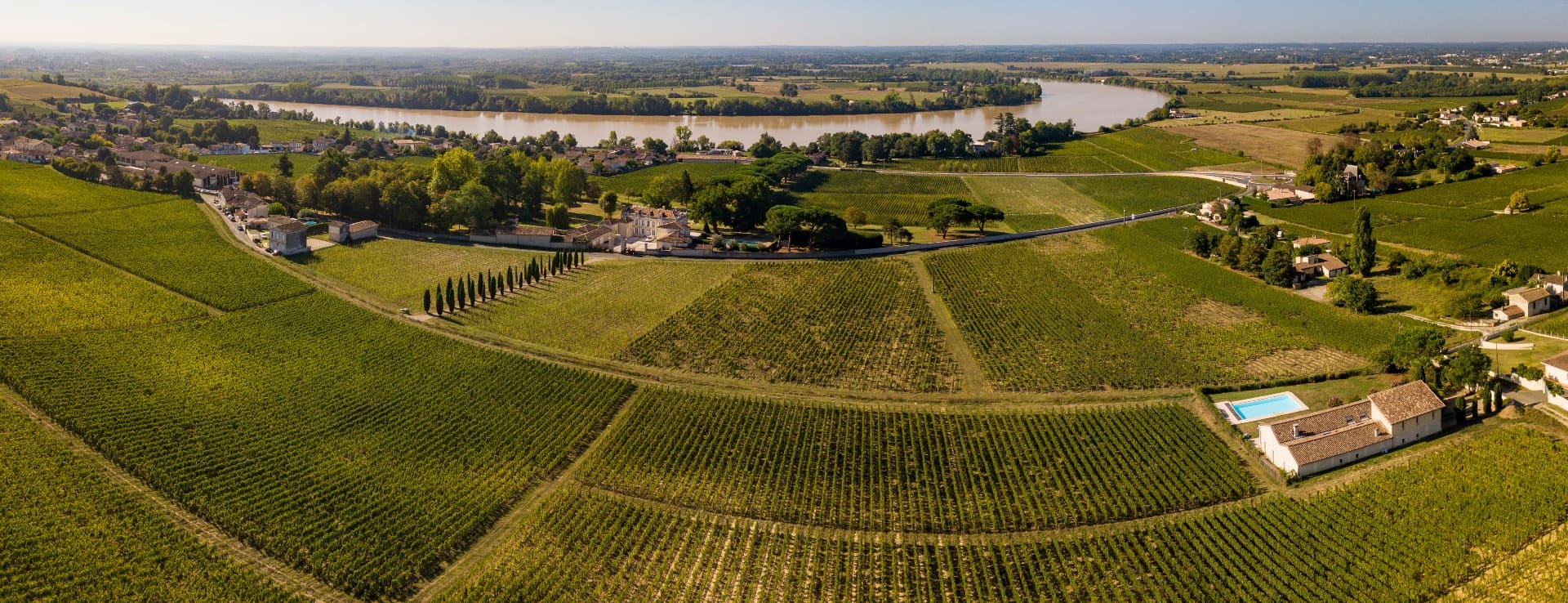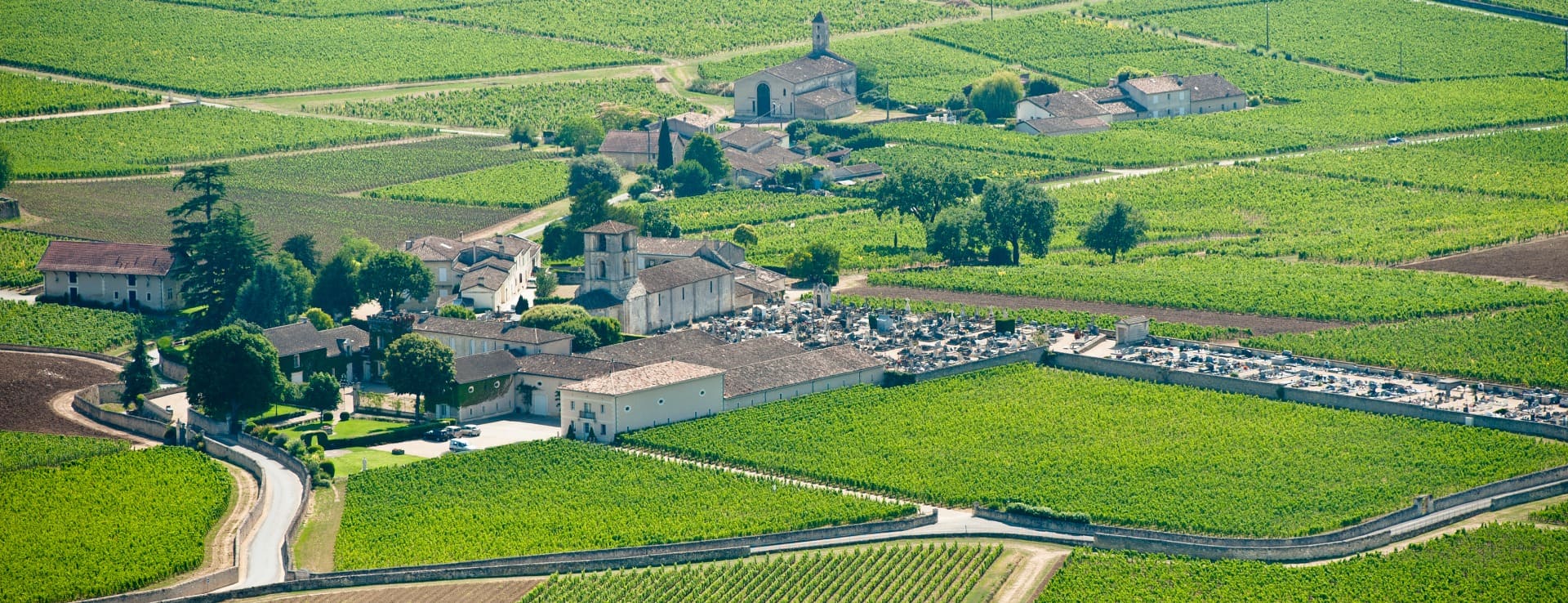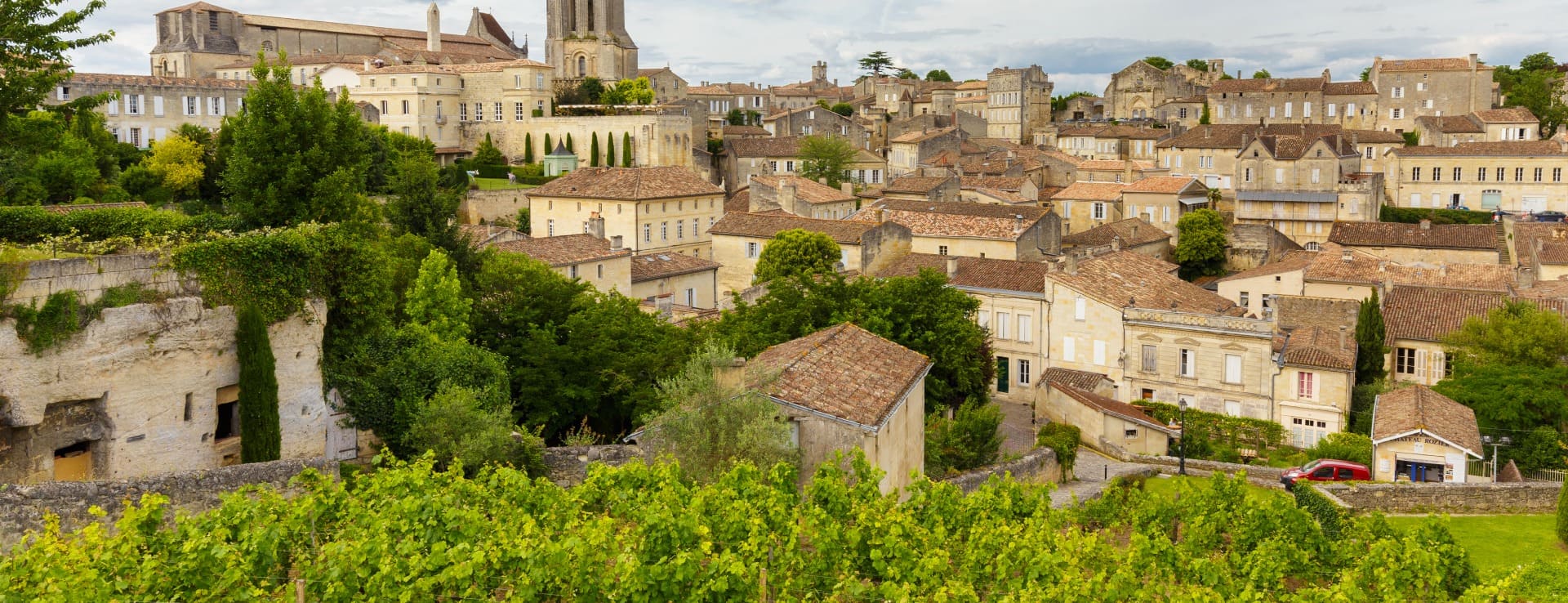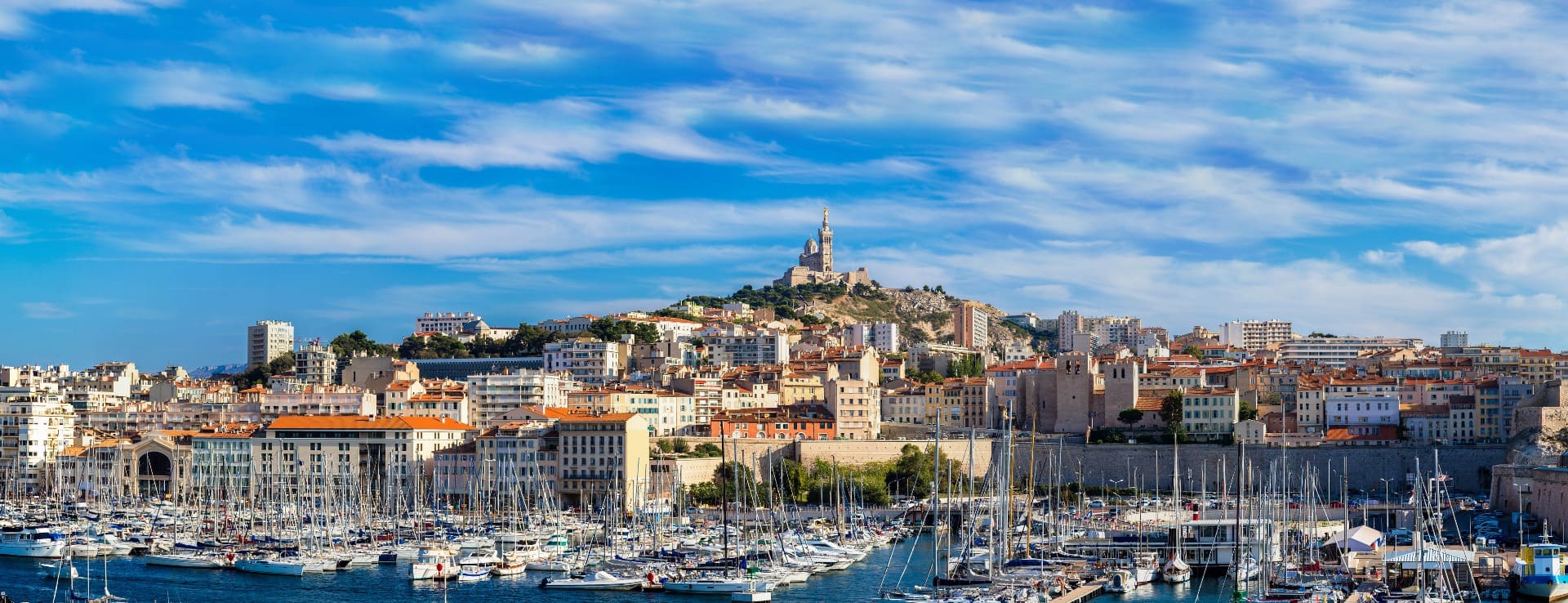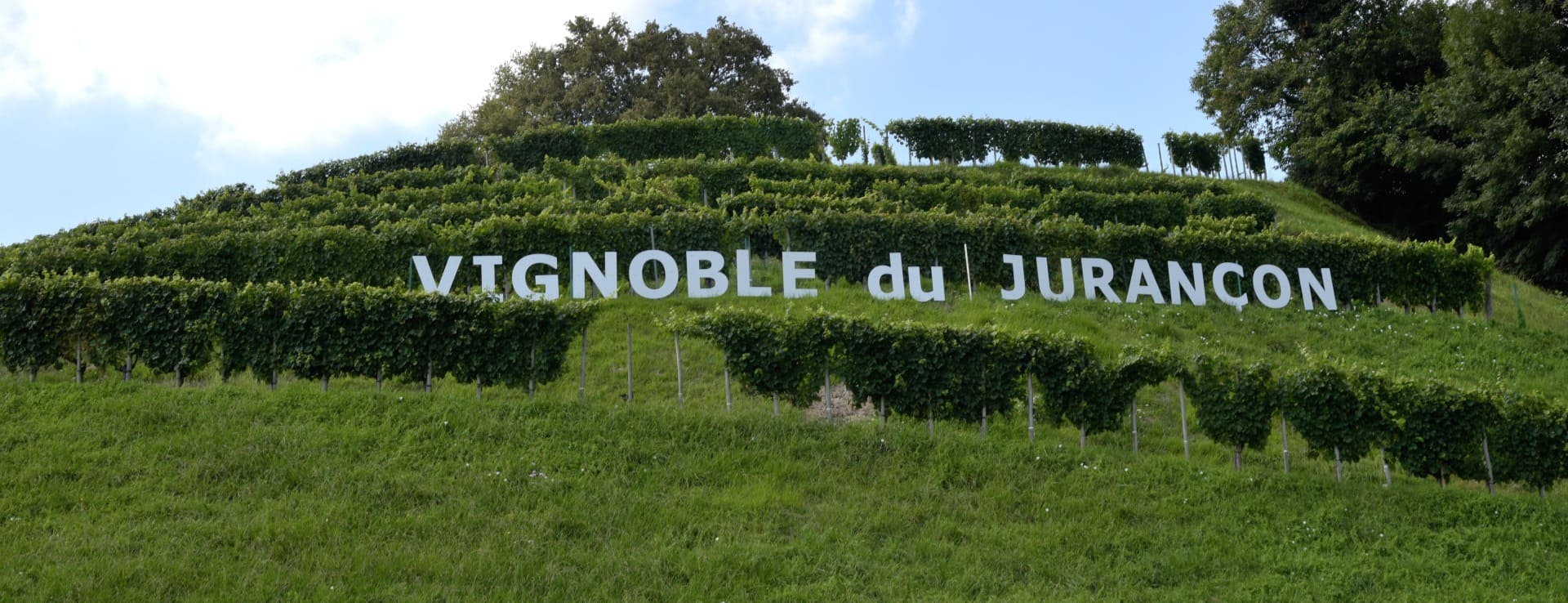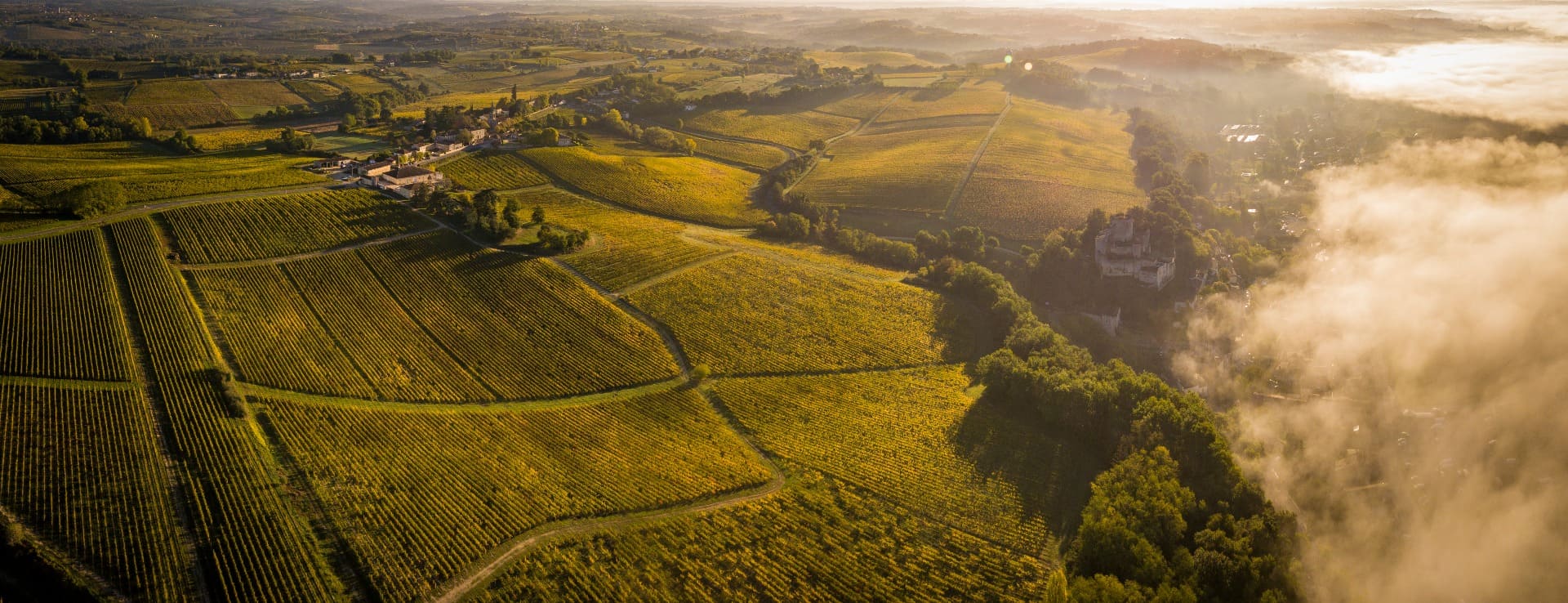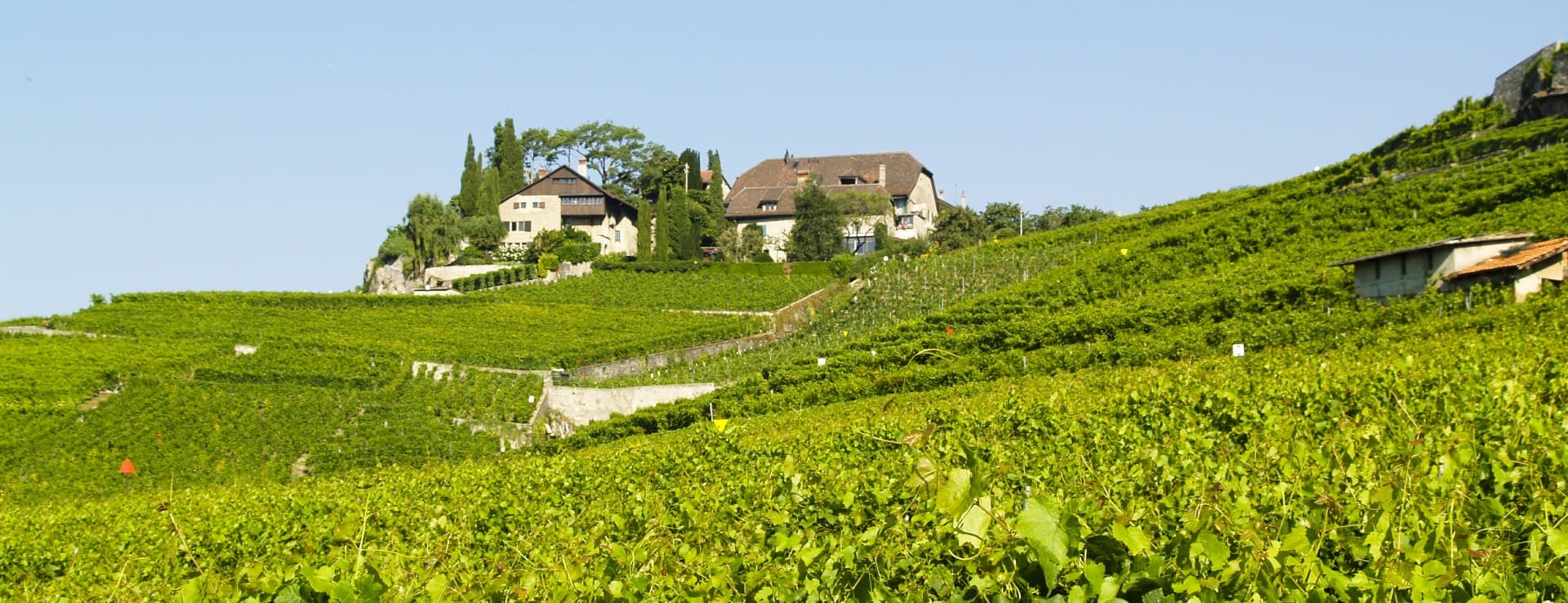Find your winery or vineyard
Infographic of the Denomination of Origin
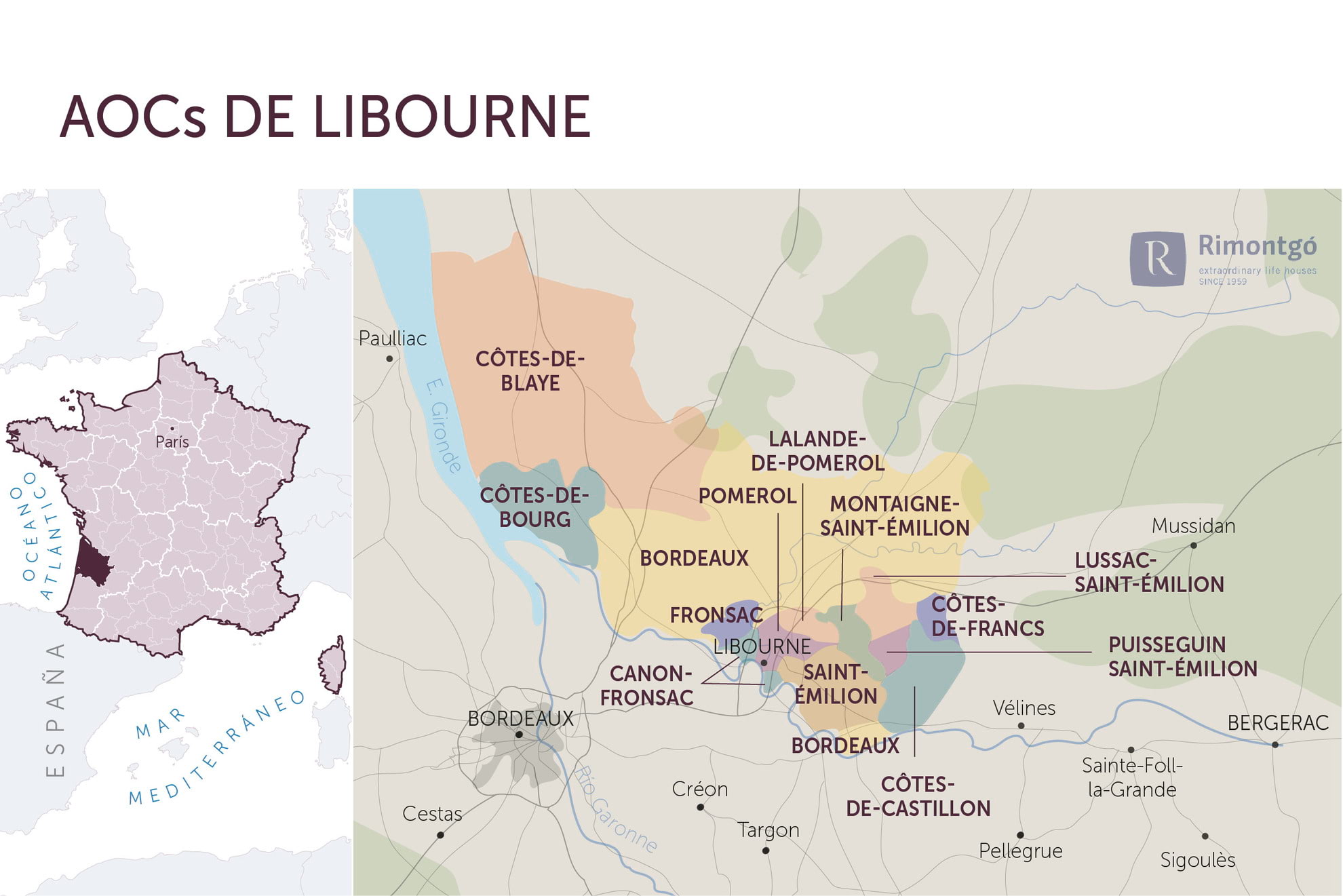
Change to imperial units (ft2, ac, °F)Change to international units (m2, h, °C)
AOC St-Emilion, AOC Pomerol, AOC Fronsac
The diversity of the wines of the Libourne region, which includes the AOCs Saint-Emilion, Pomerol and Fronsac, is so great that it is difficult to define them homogeneously. Depending on where the vines grow, the hours of sunshine, the varieties used, the vinification method and the age of the wine, the palette of colours and flavours is infinite. If the Cabernet Franc grape is predominant, the wines have a darker, almost black colour and give more body to the wine, especially if they are hillside wines. However, if it is the Merlot grape, the wine is characterised in its youth by notes of black and red fruits, such as blackberry, plum and prune, and is very round and particularly silky in the mouth. To these aromas are added aromas of cocoa, coffee and vanilla from the oak barrels. Then also depending on the type of vinification and the time of harvesting, some wines are sometimes more concentrated, showing heavier aromas of candied fruit, and conversely some great wines show a freshness on the nose with their menthol notes. Once the wine evolves in the bottle the aromas change to notes of game and musk, mushroom (truffle), undergrowth and humus, the tertiary notes of ageing.
THE VINEYARD
Libourne is a historic land of Bordeaux viticulture, of which Pomerol and Saint-Emilion are the most illustrious representatives. Its man-made vineyard landscape blends in with nature, its reliefs, its forests, its groves, its limestone slopes, its hilltops and its valleys. It is 2,000 years of uninterrupted viticulture. The mysterious limestone caves of Saint-Emilion, the footprints of the pilgrims from Pomerol to Compostela, the ghost of Charlemagne in Fronsac are just some of the elements of its history.
The Libourne vineyard comprises ten AOCs representing 12,500 ha of vineyards spread over three sectors. Saint-Emilion is the most important of the AOCs with 5,500 ha which is subdivided into two: AOC Saint-Emilion and AOC Saint-Emilion Grand Cru with stricter rules. In this AOC they are also called Cru Classés. Then there are the four satellites of Saint-Emilion: Montagne with 1.600 ha, Lussac (1.450 ha), Puisseguin (750 ha) and Saint-Georges with 185 ha. These AOCs have the right to add Saint-Emilion to the name of their village.
The Pomerol sector is smaller and has two AOCS, the illustrious Pomerol with 760 ha and Lalande de Pomerol with 1.130 ha and finally the Fronsac sector is situated on the other bank of the Ile river and is composed of two AOCS: AOC Fronsac with 840 ha and AOC Canon-Fronsac with 318 ha, being the smallest one.
THE TERROIR
The Libourne vineyard is considered by many to be one of the most dynamic, certainly in its sense of welcoming and teamwork of its winegrowers. If for a long time the wines of Libourne were less regarded than the wines of Médoc, in the last 30 years, Saint-Emilion and Pomerol have become the alter ego of the wines of the Left Bank. And their most prestigious wines, such as Pétrus, Cheval Blanc and Ausone, sell for more than the Grand Crus Classés of the Médoc. This success has been boosted by tourism in the area and by the hard work of the winegrowers in improving their wines. Moreover, in this area the wineries have less hectares than in the Médoc because the area is smaller, which makes it more exclusive. Many international personalities have come to Saint-Emilion and bought small wineries to make their wines.
THE SOILS
Thanks to a tumultuous geography, the AOCs of Libourne are distinguished by four main types of soil that give the wine great complexity.
In the Saint-Emilion sector, there are four main types of soil. In the centre is the flat area of asteroid limestone whose rock sometimes comes to the surface. To the south of this plain, the steep slope is composed of a mixture of clay, limestone scree and molasses. To the north-west of the plain, in the direction of Pomerol, a third type of soil appears, composed of a sandy layer and gravelly tops, sometimes with deep clays. To the south, near the Dordogne, there is a fourth type of soil composed of sand, silica and silty clay.
In the Pomerol sector, if the geology of Lalande de Pomerol to the satellites of St. Emilion, the AOC Pomerol extends over gravel ridges where the high point is Pétrus, located on a layer of pure clay. The other terroirs of the AOC are organised concentrically around Pétrus. The further we move away from l'Isle and la Barbanne, the two surrounding terroirs of the AOC, the sandier the soils become.
In the Fronsac sector, in a way the twin AOC of Saint-Emilion. The layout of its reliefs and the composition of its soils, from the banks of the Dordogne to the north of the AOC, make a faithful reproduction, in miniature, of the soils of Saint-Emilion and its satellites.
THE CLIMATE
The sunny terraces, beyond the Atlantic climate that floods the region, the AOCs of Libourne benefit from a warm low season and a microclimate due to the influence of the Dordogne and Isle rivers. The concept of "millésime" or vintage is a major concept in Bordeaux and is the result of the great variation of the climate from year to year. It is therefore important for winegrowers to understand these changes. Saint-Emilion, Pomerol and Fronsac are located on the 45° parallel halfway between the North Pole and the equator and benefit from a temperate oceanic climate with even Mediterranean overtones as witnessed by the magnificent green oak trees on the sunny plains. This climate is marked by moderate temperature deviations between the summer and winter seasons, an annual average of 12.8°C and rainfall well distributed throughout the year. However, Libourne has the most continental climate of all Bordeaux, and therefore the warmest. Under the protection of the Dordogne and Ile rivers, the two rivers bordering the AOCs, Saint-Emiliion, Pomerol and Fronsac, are the theatre of the summers, favourable for the grapes to ripen well. From one year to the next, differences in temperature and rainfall are sometimes significant, factors that mark the character of each "millésime".
THE VARIETIES
Bordeaux wines are great blended wines, whose personality is achieved by blending the qualities of the main grape varieties used. For the production of red wines, three varieties are mainly cultivated in different proportions according to the AOCS.
Merlot: the main variety in Bordeaux, it occupies 58% of the area planted in Bordeaux and can represent up to 75% in some AOCS. In Pomerol we can even find wines with higher proportions of Merlot. Pétrus for example contains 95% Merlot. Earlier ripening than its counterparts, Merlot is grown on most Bordeaux soils. It can give its best expression both on sunny limestone slopes and on clay-textured soils with a cool, moist character. The Merlot grape gives the wine a dark, dense colour and aromas of ripe red and black fruits (raspberry, blackberry, blackcurrant), as well as softness, roundness and silky mouthfeel. In Libourne it is more often blended with Cabernet Franc than with Cabernet Sauvignon.
Cabernet Sauvignon: it is undoubtedly the master variety of the Médoc and the Graves region. Although it is a later grape than Merlot, ripening about two weeks later, it is best expressed in the dry, warm soils found in these two wine-growing areas. It is not surprising to say that it gives its strong personality to the Grand Cru Classés of the Médoc. Some châteaux, such as Latour or Mouton Rothschild, have 80% Cabernet Sauvignon in the final blend of their great wines. This provides a great aromatic complexity with spicy notes with the peculiar characteristic of pepper and a great tannic presence in its youth. That is why the Médoc are perhaps the most difficult wines to drink young. However, after a few years the tannins start to tame and they become very elegant and complex wines that age for decades, which is the secret of the longevity of these wines.
Cabernet Franc: also called Bouchet in Libourne, it is undoubtedly one of the oldest Bordeaux varieties. It is mainly found in Saint-Emilion where it occupies between 30 and 35% of the planted area and sometimes more. It is thus the dominant variety in some of the AOC's most prestigious wines. It reaches 55% of the blend in Châteaux Ausone and 60% in Château Cheval Blanc. Very demanding to cultivate, late as its counterpart Cabernet Sauvignon grape, it is however, a little less tannic and less coloured and always very aromatic. On the other hand, it is rarely found in Médoc or Graves.
Petit Verdot: it is an archaic form of the Cabernet grape, but it has many qualities. For a long time it was only planted in Médoc, nowadays it is also found in Graves. Very tannic and late-ripening like Cabernet Sauvignon, it is less demanding to grow and more resistant to rot. It is a marginal variety as it represents between 1 and 5% of the blend of some Grand Crus Classés such as Château Lafite-Rothschild, Latour and Mouton-Rothschild.
TRADITIONS
The wines of Saint-Emilion are slowly aged underground in caves dug into the limestone rock of the Saint-Emilion subsoil. These caves are a symbol of the identity and history of these vineyards. If there is a singular place in this wine-growing landscape, it is the caves, whose presence can be guessed by their chimneys, sometimes in the middle of the plot, which emerge to ensure the ventilation of the site. The subsoil of Saint-Emilion is like a gruyere cheese where 200 km of galleries communicate with each other, sometimes on up to four different levels.
After the 12th century and until the end of the 19th century, the stone has been continuously exploited for the construction of houses and local buildings. Saint-Emilion is a privileged witness of the history of stone. At the end of the 20th century, these quarries were used as cellars for wine cellars, but above all as mushroom farms. This activity was abandoned a few decades ago.
Today, all the properties located on the plain, near the village, have a cave for ageing their wines in ideal conditions. The temperature is constant and corresponds to the annual average temperature of the region.
Among the most spectacular cellars are Clos Fourtet, Château Belair, Ausone and Canon. And some wineries organise tours such as Château La Couspade and Clos la Madelaine.
HISTORY
This is a thousand-year-old vineyard. The Romans planted vines on the slopes of Saint-Emilion. Libourne is a historic business port and Pomerol a stage on the road to Compostela. Few AOCs in this part of Aquitaine, hidden by history, can boast such a long love affair with the vine. The vineyard would have been planted at the end of the 2nd century by the Roman legions of Valerius Probus, after having cleared the forest of Cumbis, the original name of the site of Saint-Emilion. Over the centuries, the town was enriched with Roman villas, such as that of the consulate and poet Ausone. After the fall of the Roman Empire, Saint-Emilion became a religious town, but kept the viticulture in the local agriculture. Pomerol became a stage on the road to Compostela and from the Middle Ages onwards, Fronsac, where Charlemagne chose to make his home, became the historical cradle of the region's quality wines.
The Middle Ages shaped the vineyards of Libourne to such an extent that even today, the small size of the vineyards in the hands of a single owner is the legacy of that feudal system organised in small estates. Over time, the region became part of the awakening of Bordeaux's wine development, thanks to Libourne, an important wine trading port on the Dordogne river, which favoured exports mainly to the northern countries.
The year 1884 marks an important date in the history of wine because, in that year, Saint-Emilion created the first wine-growing syndicate in France, 52 years before the creation of the AOCs. And in 1948, the winegrowers of Saint-Emilion reconstituted the Jurade, which in the 13th century administered the jurisdiction of Sain-Emilion. It is the Jurade that promulgates the prohibition of the harvest and the Judgement of the new wine and organises itself as an ambassador of the local tradition, tastings and samplings to promote the wines all over the world. Today the vineyards of Saint-Emilion, Pomerol, Fronsac, thanks to a permanent renewal of their winegrowers and a very acute sense of teamwork, are among the most prestigious AOCs in France.
The classification of the great wines of Saint-Emilion is reviewed every 10 years and is treated as a judicial procedure, the next review will be in 2022.
Premiers Grands Crus Classés A (4)
Château Angelus
Château Ausone
Château Cheval Blanc
Château Pavie
Premiers Grands Crus Classés B (14)
Chàteau Beauséjour
Château Beau-Séjour Bécot
Château Bélair-Monange
Château Canon
Château Figeac
Château La Gaffelière
Chatêau Canon la Gaffelière
Château La Mondotte
Château Larcis Ducasse
Château Pavie Macquin
Château Troplong-Mondot
Château Trottevieille
Clos Fourtet
Château Valandraud
Grands Crus Classés (64)
Château Balestard la Tonnelle
Château Barde-Haut
Château Bellefont Belcier
Château Bellevue
Château Berliquet
Château Cadet Bon
Château Cap de Mourlin
Château Chauvin
Château Clos de Sarpe
Chàteau Corbin
Château Côte de Baleau
Château Dassault
Château Destieux
Château Fougères
Château Faurie-de-Souchard
Château Fleur Cardinale
Château Fombrauge
Château Fonplégade
Château Fonroque
Château Franc-Mayne
Château Grand Corbin
Château Grand Corbin-Despagne
Château Grand Mayne
Château Grand-Pontet
Château Guadet
Château Haut Sarpe
Château Jean Faure
Château La Fleur Morange Mathilde
Château Laniote
Château Larmande
Châtaau Laroque
Château Laroze
Château Monbousquet
Château Moulin du Cadet
Château Pavie Decesse
Château Peby Faugères
Château Le Prieuré
Château Quinault l’Enclos
Château Petit Faurie de Soutard
Château Ripeau
Château Rochebelle
Château Saint-Georges-Côte-Pavie
Château Sansonnet
Château Soutard
Château Tertre Daugay
Château Villemaurine
Château Yon-Figeac
Château de Ferrand
Château de Pressac
Château l’Arrose
Château la Clotte
Château la Commanderie
Château la Couspade
Château la Dominique
Château la Marzelle
Château la Serre
Château la Tour Figeac
Château e Chatelet
Château les Grandes Murailles
Clos de l’Oratoire
Clos des Jacobins
Clos Saint-Martin
Clos la Madeleine
Couvent des Jacobins
Discover more wineries and vineyards for sale in these wine regions in France
Subscribe to our mailing list to receive news about wineries and vineyards.


